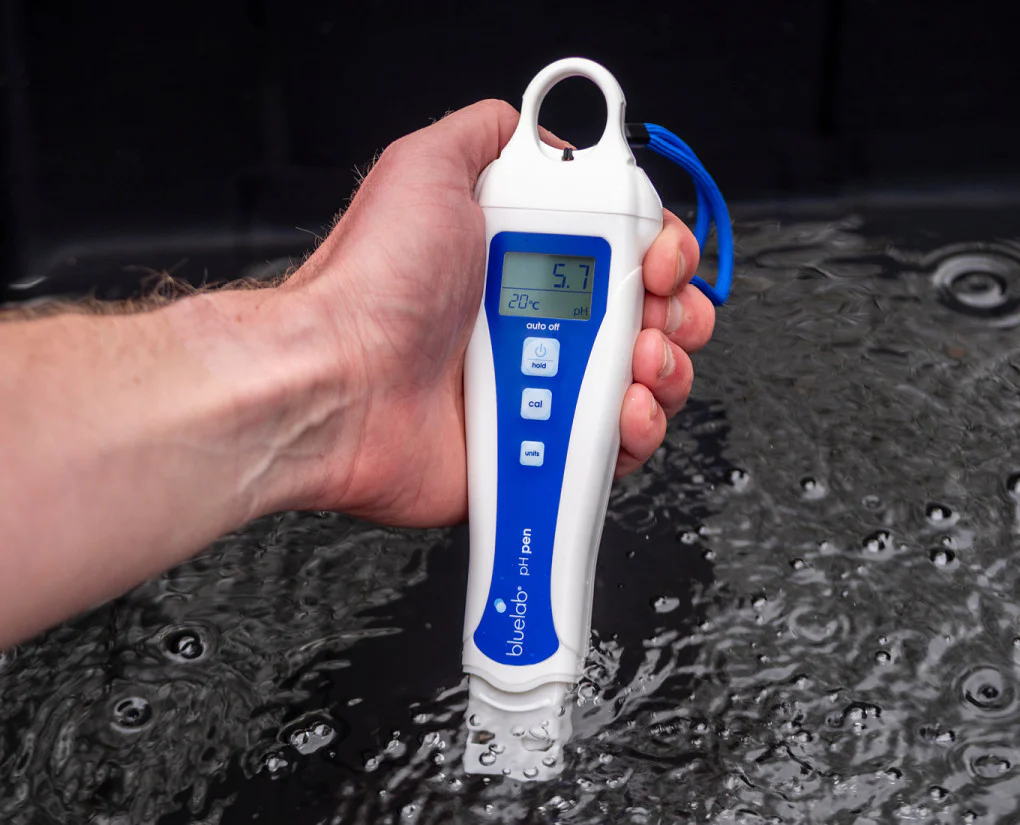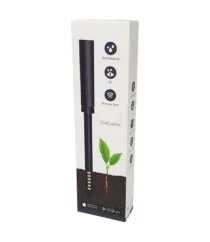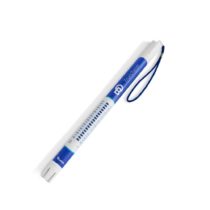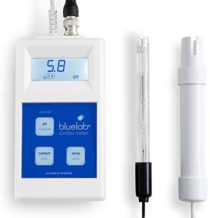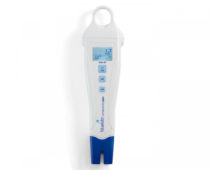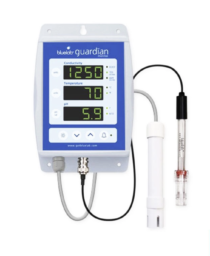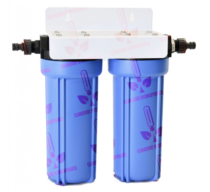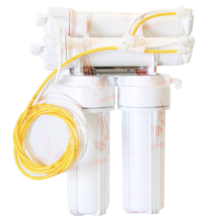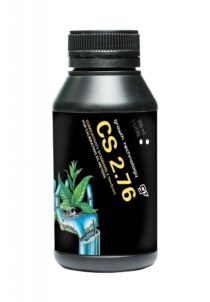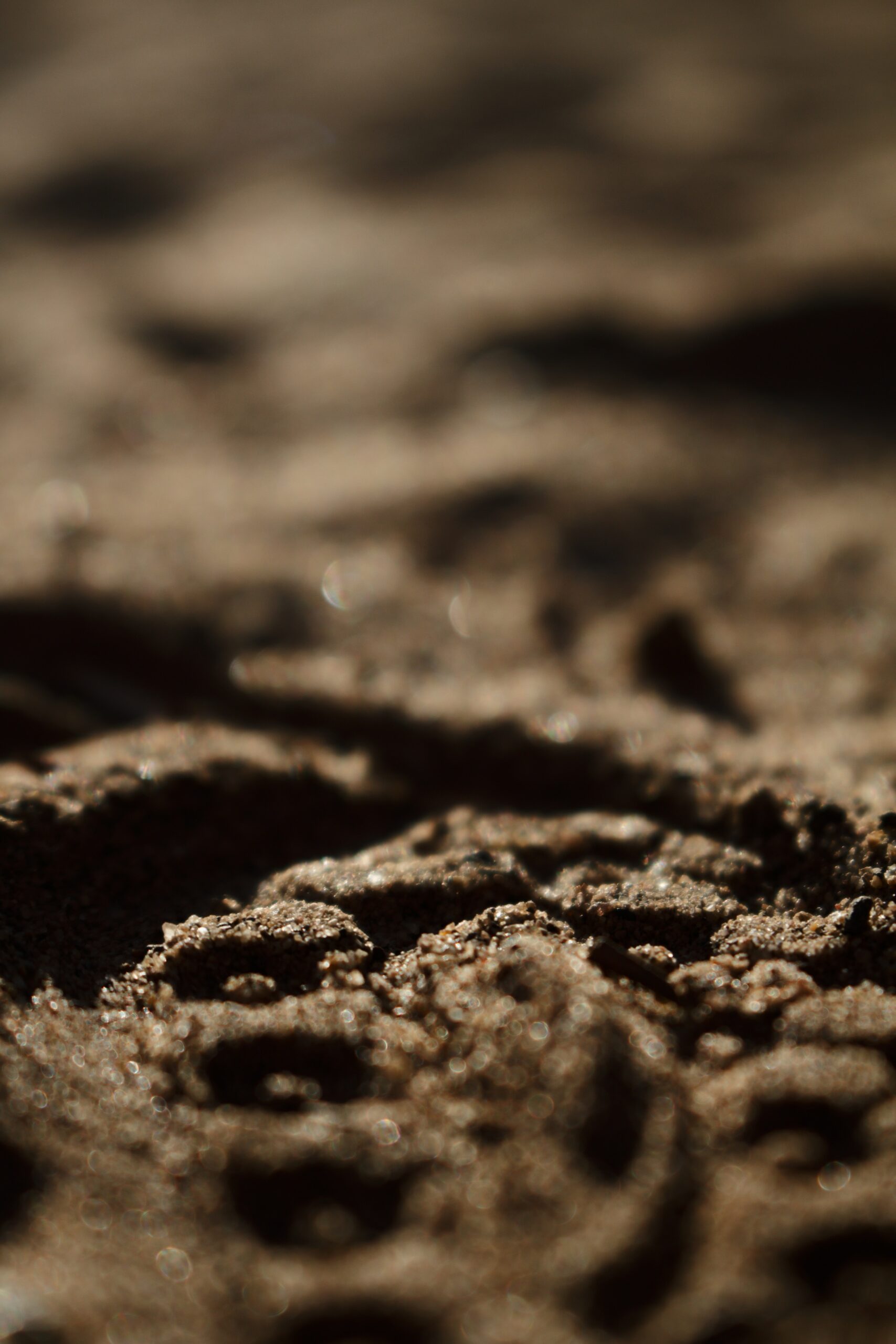Electrical conductivity (EC) is a crucial parameter to monitor when growing plants, as it provides invaluable insights into the nutrient concentration in a plant’s environment. EC, measured in microsiemens per centimeter (µS/cm) or millisiemens per centimeter (mS/cm), determines the ability of a solution to conduct an electric current. As such, it plays a significant role in maintaining optimal nutrient levels, plant growth, and overall yield quality. In this post, we will explore the importance of measuring EC and offer some practical tips to achieve ideal results.
Why EC Matters
- Nutrient Uptake – Measuring EC allows growers to maintain the optimal nutrient concentration, ensuring that plants receive the right amount of essential elements for healthy growth. The ideal EC levels for plants varies depending on the growth stage, strain, and growing medium used. A balanced EC ensures proper nutrient uptake, preventing issues such as nutrient lockout, which can lead to reduced growth, lower yields, and poor plant health.
- Prevention of Nutrient Imbalances – Regularly monitoring EC levels helps growers identify potential nutrient imbalances and adjust their feeding strategy accordingly. For example, an overly high EC indicates a high concentration of nutrients in the solution, which can cause nutrient burn or salt buildup in the root zone. Conversely, a low EC signifies a lack of nutrients, leading to nutrient deficiencies and stunted growth. Monitoring and adjusting EC levels accordingly helps maintain balanced nutrient levels, ensuring that cannabis plants have access to the nutrients they need without risk of damage.
- Stress and Disease Management – An optimal EC promotes a healthy root zone, helping to protect plants from stress and disease. Unbalanced EC levels can lead to root damage, making the plants more susceptible to infections and pests. Monitoring EC also allows growers to address any issues quickly, reducing the risk of plant stress and preventing potential yield loss.
- Maximize Yield and Quality – By maintaining the right EC levels, growers can optimize the overall growth rate and health of their plants. This translates to increased yields and better-quality flowers, as the plants receive the nutrients required for optimal growth and cannabinoid and terpene production.
Practical Tips for Measuring EC
- Use a Reliable EC Meter – Invest in a reliable and accurate EC meter to ensure that measurements are precise. Regularly calibrate the meter and clean the probe to maintain its accuracy.
- Adjust EC for Growth Stages – EC levels should be adjusted depending on the plant’s growth stage. Generally, lower EC levels are appropriate for seedlings and young plants, with levels gradually increasing as plants enter the vegetative and flowering stages.
- Factor in Water Quality – The quality of the water used in the nutrient solution can affect EC measurements. Test the water for its initial EC level and consider using filtered or reverse osmosis water to reduce the risk of introducing unwanted contaminants or minerals.
- Monitor EC Regularly – Check EC levels frequently, especially after adding nutrients or adjusting the growing environment. This will help ensure that your plants receive the ideal concentration of nutrients throughout their growth cycle.
What PPM – EC should I maintain?
Requirements depend on the growth phase, the time of year and the brand of nutrients. While most nutrient companies suggest you use more, we find find that less is more! A Bluelab truncheon or a simple EC pen is a suitable tool for measuring EC. If the EC is too low – add more nutrient. If the EC is too high – add more water. Below is a guide on nutrient strengths. If unsure, use less nutrients.
Vegetative: 840 PPM – 1540 PPM | 1.2-2.2 EC
Flowering: 1260 PPM – 1680 PPM | 1.8- 2.4 EC
Vegetative: 840 PPM – 1400 PPM | 1.2-2.0 EC
Flowering: 1260 PPM – 1540 PPM | 1.8- 2.2 EC
Measuring EC of Nutrient Solution vs. Runoff
It’s important to understand the differences between measuring the EC of the nutrient solution and the runoff. These measurements offer distinct insights into the nutrient uptake and overall plant health, and monitoring both can help growers make better-informed decisions to optimize their plants’ growth and yields.
Nutrient Solution EC – The EC of the nutrient solution refers to the concentration of dissolved nutrients in the water before it is introduced to the plants’ roots. Measuring the nutrient solution’s EC allows growers to ensure that the provided nutrient concentration aligns with the plants’ needs at each stage of their growth cycle.
Runoff EC – Runoff is the excess nutrient solution that drains out of the growing medium after being applied to the plants. Measuring the EC of the runoff offers insights into the nutrient uptake and the balance of nutrients in the root zone. Comparing the EC of the nutrient solution to the EC of the runoff can help growers identify potential nutrient imbalances, salt build-up, or nutrient lockout issues. If the runoff EC is significantly higher than the nutrient solution EC, this could indicate that the plants are not taking up all the available nutrients, leading to salt accumulation in the root zone. Conversely, if the runoff EC is lower than the nutrient solution EC, the plants may be taking up nutrients more rapidly than they are being replenished, suggesting that nutrient levels may need to be increased.
Measuring EC in Soil vs. Nutrient Solution
When it comes to measuring EC, consider the differences between monitoring the EC of soil and nutrient solution. Soil-based growing environments may require the measurement of the EC in the soil itself, which reflects the availability of nutrients to the plants’ roots. In this case, a soil EC meter can be used to take direct readings, providing insights into the overall soil health and nutrient availability. It is essential to regularly test different spots in the soil to get an accurate representation of the entire root zone. In hydroponic growing mediums and systems, growers monitor the EC of the nutrient solution, ensuring that the concentration of dissolved nutrients remains within the ideal range for the specific growth stage and strain of cannabis being cultivated. To maintain accuracy, it is recommended to frequently test the nutrient solution and make any necessary adjustments to the concentration, keeping in mind the specific requirements of the plants.
Measuring electrical conductivity in cannabis cultivation is of paramount importance to ensure healthy growth, disease prevention, and optimized yields. By regularly monitoring and adjusting EC levels, growers can maintain the optimal nutrient balance, create an ideal growing environment, and ultimately maximize both the quality and quantity of their cannabis harvest.


